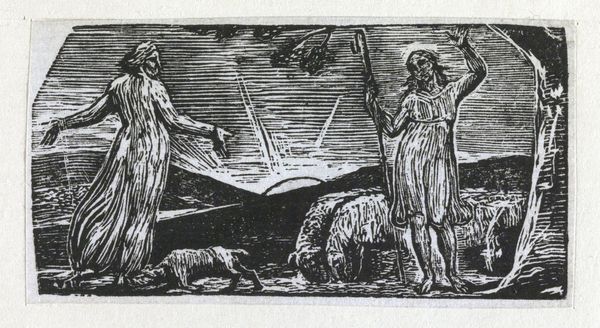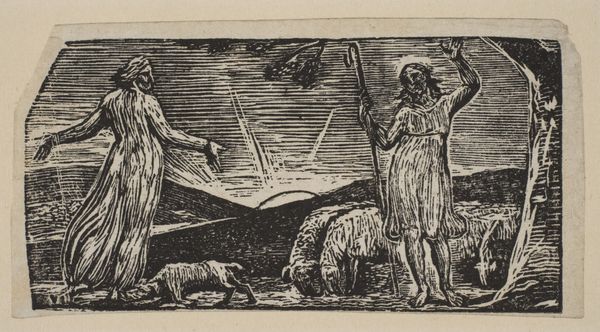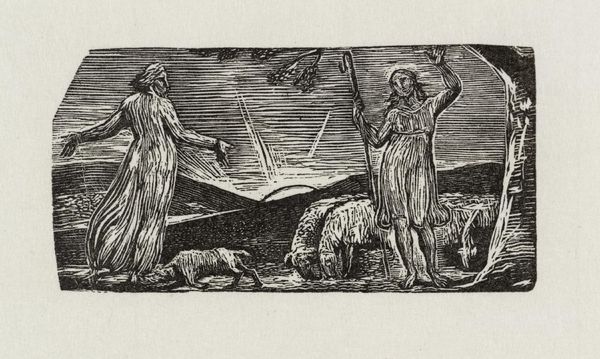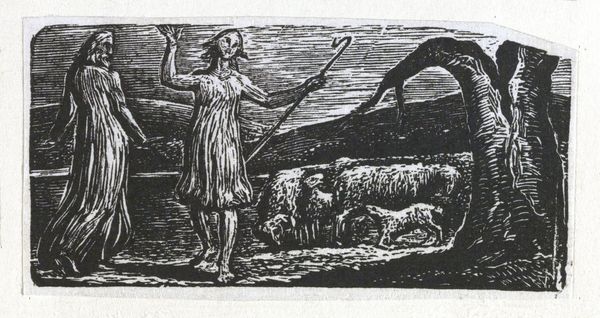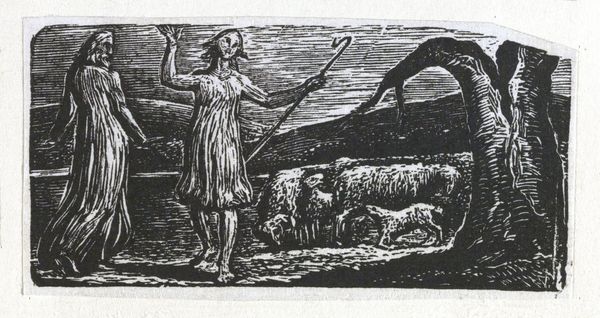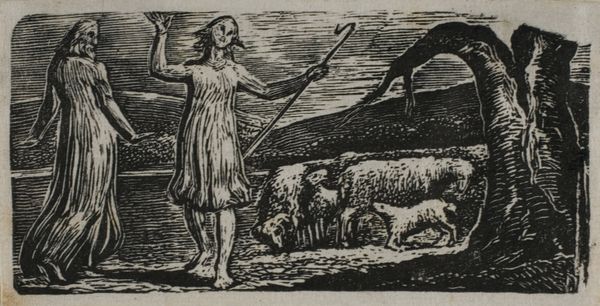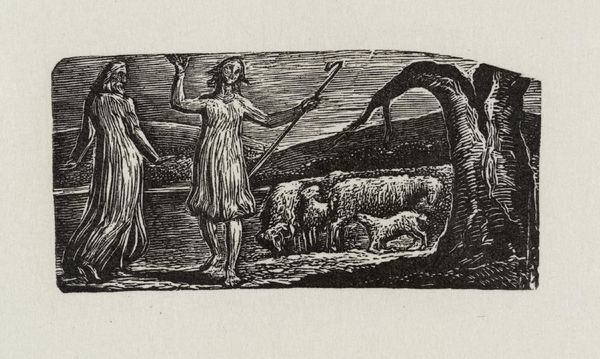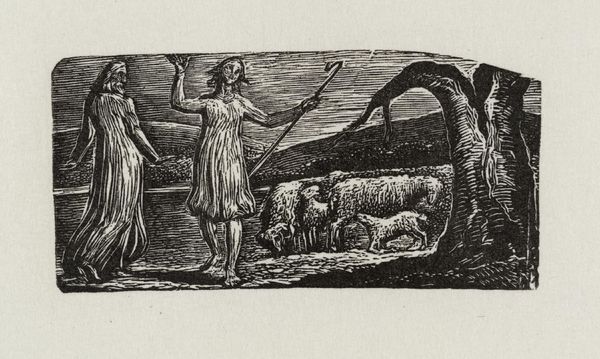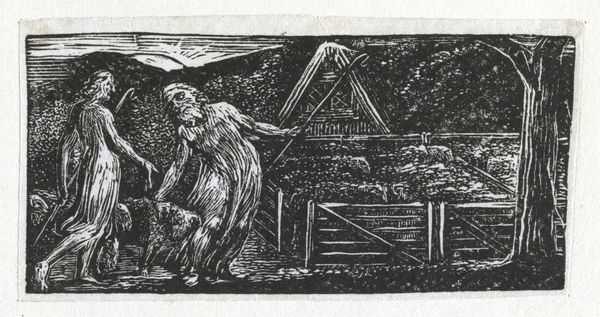
Dimensions: image: 38 x 74 mm
Copyright: CC-BY-NC-ND 4.0 DEED, Photo: Tate
Editor: This is William Blake’s "Thenot Remonstrates with Colinet", a small engraving. It feels...charged. The figures are so expressive despite the stark lines. What social commentary might Blake be making here? Curator: Consider Blake’s radical politics and religious beliefs. The pastoral setting can be viewed as a critique of societal norms and power structures, even the church. How do you interpret the body language of each figure? Editor: One seems to be pleading, the other...exasperated? Maybe Blake is exploring tensions between established authority and individual rebellion? Curator: Precisely. The engraving’s starkness amplifies these tensions, hinting at the restrictive forces at play in society, and even the struggles within ourselves. Editor: It's fascinating how such a small piece can hold so much complexity. I'll never look at pastoral scenes the same way again! Curator: Indeed. Art allows us to examine our world and our place in it, pushing for change and a more equitable future.
Comments
tate 6 months ago
⋮
http://www.tate.org.uk/art/artworks/blake-thenot-remonstrates-with-colinet-a00112
Join the conversation
Join millions of artists and users on Artera today and experience the ultimate creative platform.
tate 6 months ago
⋮
Samuel Palmer was the most important of Blake’s followers, known as the Ancients. Palmer first met Blake in 1824. He described these illustrations to an imitation of the First Eclogue by the Roman poet Virgil as ‘visions of little dells, and nooks, and corners of Paradise’. Palmer’s art was particularly influenced by them. These prints appealed to the Ancients because they were the result of Blake’s experiments with a new medium; he had never engraved on wood before. Even at the age of sixty-four he wanted to make further explorations in his art. Gallery label, August 2004
